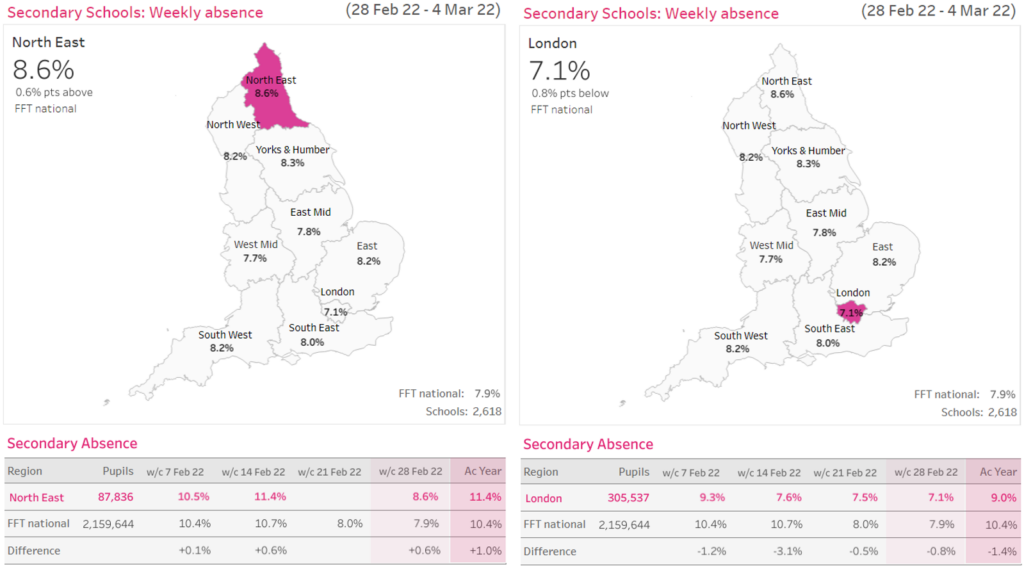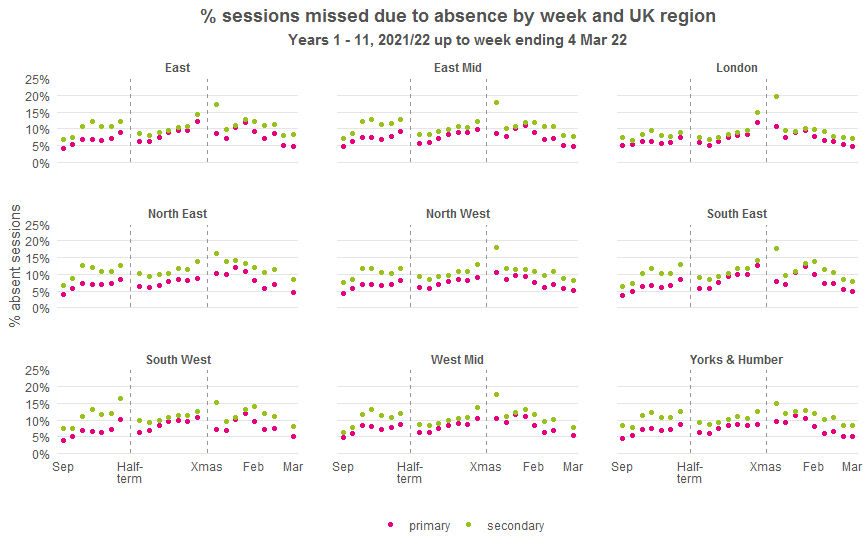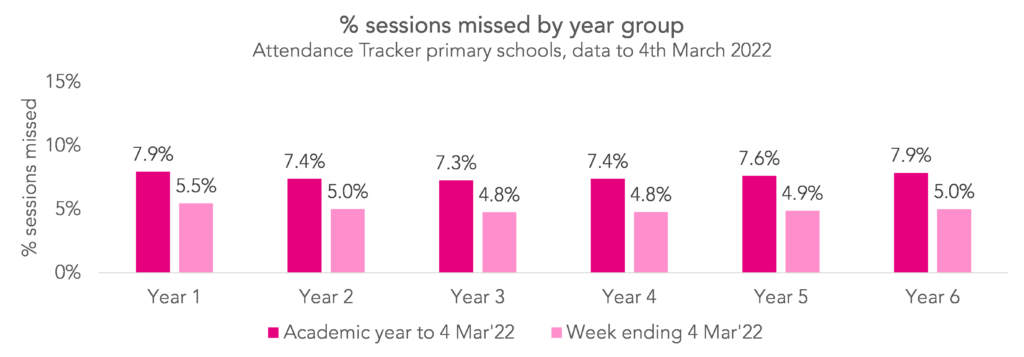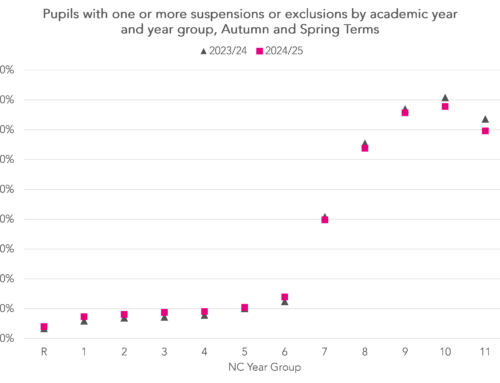Today marks the release of FFT’s Regional Attendance Tracker page. From this week onwards, you’ll be able to see the latest insights into pupil absence across the country as they happen.
The data comes from schools subscribed to Aspire Attendance Tracker – currently 2,600 secondary and 6,200 primary schools.
What’s happening now?
In a welcome break from the gloom that tends to accompany discussions about pupil absence, it looks like things are improving. In all regions, absence at primary and secondary is as low as it’s been since the very beginning of September.
Nationally, primary pupils missed 5.0% of sessions due to absence last week, compared with 7.6% of sessions since the start of this academic year. And secondary pupils missed 7.9% of sessions compared with 10.4% since the start of this academic year.
The regional picture
Using the Regional Attendance Tracker page, we can see how these national figures vary by region.
In primary schools, there’s wasn’t too much difference last week between the region with the highest absence rate, the West Midlands at 5.3%, and the regions with the lowest, the North East (and London) at 4.7%. That range of 0.6% is actually the smallest we’ve seen this academic year – in January it was typically between three and four percent.

At secondary, we see a bit more variation. Despite having the lowest absence rate at primary, the North East had the highest at secondary – 8.6%, and London the lowest at 7.1%. Though the range of regional absence rates is wider than at primary, it’s smaller than we’ve seen at any point this academic year.

In January and February London tended to have the lowest absence rate, sometimes even around four to five percentage points lower than regions with the highest. Although absence is still lower in London, the gap compared to other areas has reduced considerably.
Variation over time
Now let’s put the latest week’s data into context. Below, we plot primary and secondary absence by region across the academic year.

We see the national picture mirrored in most regions: some of the lowest absence rates we’ve seen this academic year. However, the scale and length of disruption schools have faced during the year so far is clear. Most regions didn’t see absence rates below 10% in secondary or below 7% in primary between November and the end of February.
(If you’re wondering what happened in the week after Christmas in secondary schools, they were involved in herculean efforts to Covid-test all of their pupils before allowing them to return to classrooms.)
Variation by year group
To finish, let’s look at a breakdown by year group. We’ll compare absence rates last week with the academic year so far.


All year groups saw improvements in absence last week. Typically, absence was between 2.5 and 3 percentage points lower last week than the academic year to date.
However, particularly in secondary schools, it’s still higher than in pre-pandemic years (4.1% for primaries in Spring 2019 and 5.6% for secondaries).
What next?
A rare piece of good news for schools this week, then, particularly in the context of such a gruelling year.
They are still facing plenty of challenges though. Absence is still higher than we’d like it to be, particularly in secondary schools. Some Year 11 pupils have missed huge amounts of in-person Key Stage 4 teaching. And we may be living with the consequences of so much persistent absence for a long while yet.
Some of the good news from last week might simply be because it was the first week back after a half-term break too (for many schools – second week back for others). Keep an eye on our Regional Attendance Tracker page to see what happens next.






How can we be a part of this or have access to it?